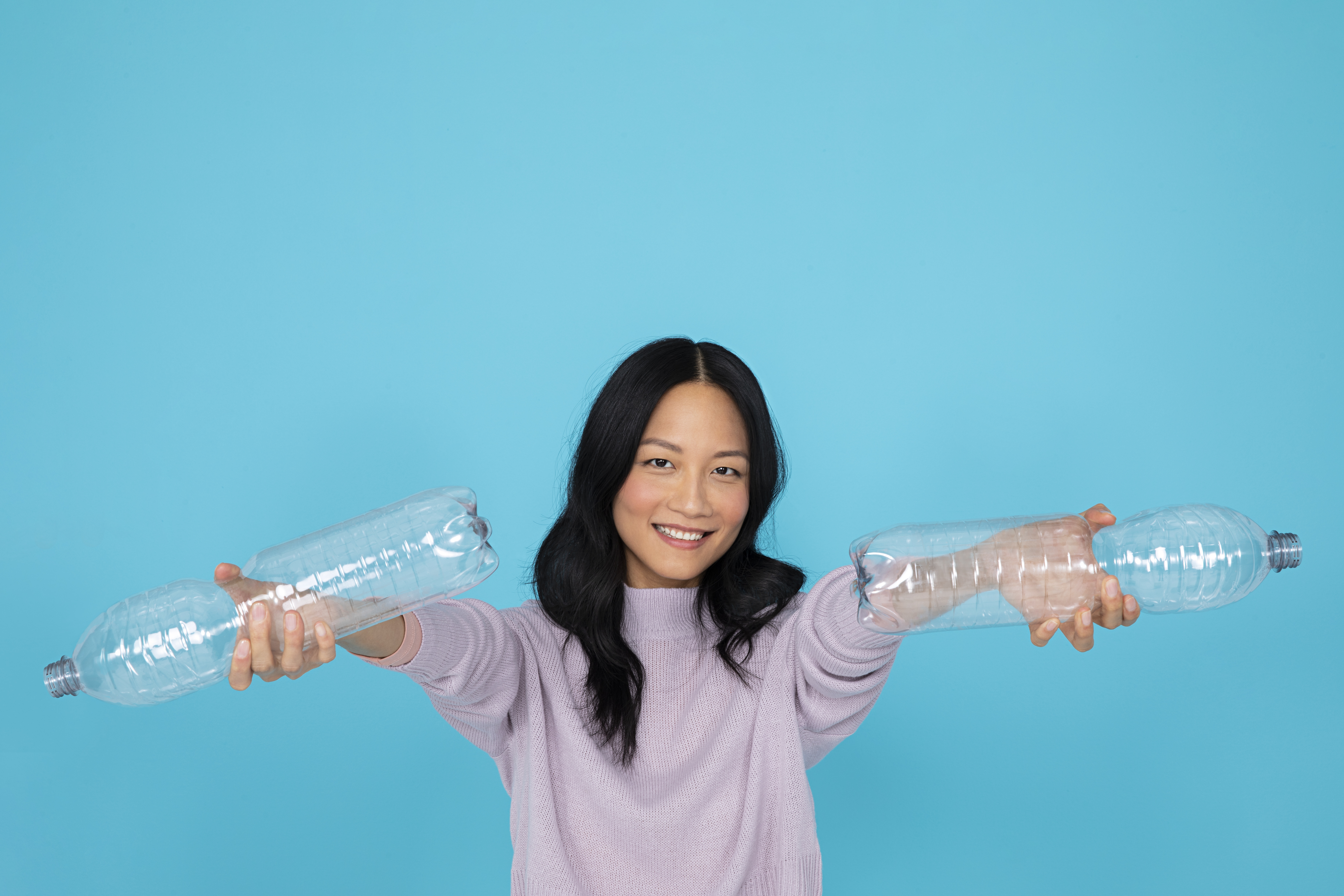
How TOMRA seeks to combat plastic pollution
Beverage containers – production and disposal
Research shows that, every year, more than 1.4 trillion beverage containers are sold, where 500 billion of those are plastic. Of the 78 million tons of plastic packaging produced every year, only 14% is collected for recycling. A huge 40% of plastic packaging is simply sent to landfill, and 32% ends up in nature as litter.
The International Coastal Cleanup in 2023 surveyed over 15.5 million pieces of litter from 97 countries, and found plastic beverage bottles and caps in the top 2 and 4 types of litter collected. Research has found that plastic bottles release methane and ethylene – powerful greenhouse gases – when exposed to solar radiation or water. It is estimated that a plastic bottle takes 450 years to break down in nature, and the rate of production of these gases increases over time.
All this can be stopped: most plastic bottles are made of PET and HDPE, which are highly recyclable materials. Plastic should not be perceived or treated as disposable, but as a valuable resource.
The impact of plastic pollution on oceans

Ocean plastic pollution is a growing concern, and there are real reasons for concern about what happens when plastic leaks into the environment. At least eight million tons of plastic end up in the oceans each year, the equivalent of one garbage truck per minute. There is estimated to be more than 5.25 trillion pieces of plastic debris in the oceans.
The plastic pollution ending up in the oceans is having a devastating effect on marine life. Plastic waste kills up to a million seabirds a year, and emaciated whales are washing up on beaches with stomachs full of plastic. Microplastics consumed by sea life – and the chemicals associated with those plastics – are working their way up the food chain to humans.
Reports suggest that roughly 80% of all plastic waste found in our oceans comes from land. Ocean and shoreline clean-ups can have an impact on the plastics and litter already in waterways and oceans, but ultimately the world needs to find ways to “turn off the tap” on land – to stop plastics getting into the oceans in the first place. That is why plastic pollution is particularly close to TOMRA’s heart, and where TOMRA seeks to contribute through enabling proven solutions to litter like deposit return systems.
TOMRA Collection’s solutions for plastic waste management
TOMRA is at the forefront of combating plastic pollution through innovative solutions like reverse vending machines and deposit return systems. It helps keep plastic materials pure and recyclable. A discarded plastic bottle is double waste: not only does it end up polluting nature or landfills, but it also loses its opportunity to be recycled again and again into a new bottle.


When a used bottle is returned to a TOMRA reverse vending machine (RVM) for recycling, often as part of deposit return systems, it is kept separate from other kinds of waste and avoids contamination that might make it more complex and costly to recycle. With the container materials remaining pure and of a high quality, they can be turned back into another plastic bottle in a “closed loop”. This means the material can more easily stay in the loop rather than getting downcycled or thrown away; it also reduces the need to extract virgin oil resources to produce new plastic bottles. TOMRA calls the continuous cycle of bottle-to-bottle recycling “Clean Loop Recycling”, and we are striving for as many beverage containers to be kept in the Loop as possible. Currently only 2% of all the world’s plastic packaging is recycled in a closed loop.
TOMRA captures over 46 billion drink containers each year for recycling through its approximately 85,000 reverse vending installations across more than 60 markets. “Our over 46 billion collected containers only represent 3% of global beverage packaging sold, so there is much more that we can do together to divert containers from landfill and nature,” explained Head of TOMRA Collection, Marius Fraurud. “This number has to improve to meet future demand for recycled material and to keep used beverage containers from ending up where they don’t belong.”
TOMRA also provides solutions for sorting mixed waste for recycling. This technology sorts all types of plastic materials, and can also sort the materials by color to provide pure sorting results and pure end products (such as PET, PE etc). These sorted materials are then further processed and recycled by our partners.
Raising awareness and taking action: How else TOMRA seeks to fight plastic pollution
The key way that TOMRA strives to fight plastic pollution is through the very work we do each day: our collection and sorting solutions that make sure these plastic materials are seen as resources that remain on land (and out of streets and landfills), where they can be put to future good use.
TOMRA also wants to go above and beyond “just doing business”, in order to truly have an impact on plastic pollution.
TOMRA is committed to raising awareness about plastic pollution and advocating for waste management solutions. Initiatives like participating in World Cleanup Day, and calling for a global plastic pollution treaty are part of TOMRA's efforts. Here are some of the further ways that all of TOMRA is seeking to raise awareness of marine plastic pollution and fight its spread:
Join TOMRA in the fight against plastic pollution and get involved. Together, we can make a significant impact on reducing plastic waste on land and at sea.





